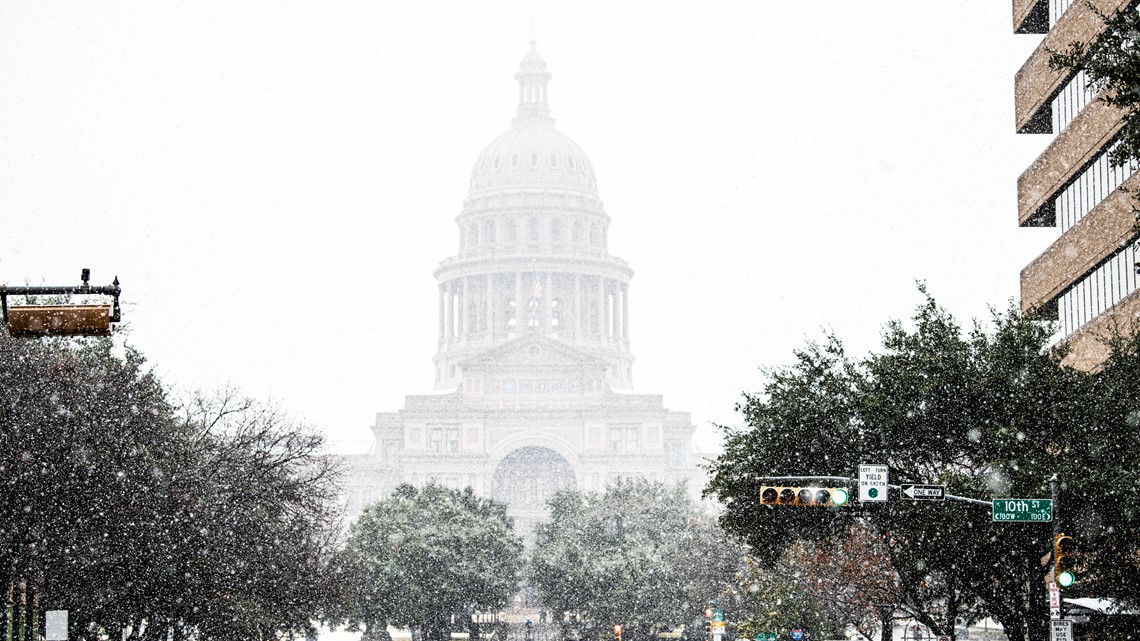
The Texas electric grid performed adequately during a routine cold snap, but if Texans mistakenly believe the grid is generating, delivering and financing electricity optimally, we’ll experience more blackouts.
No one seriously thought that a dusting of ice and snow, with temperatures in the 20s, would freeze natural gas wells, trigger blackouts and plunge millions into icy darkness. The National Weather Service described the most recent storm as typical.
Last February’s storm featured single-digit and negative temperatures, howling winds and 10 times more precipitation. Valentine’s Day 2021 was the first time all 254 Texas counties were simultaneously under a winter storm warning.
Historically, that’s a once-a-decade storm in Texas, but a changing climate will make them more frequent.
So far, the Legislature, Gov. Greg Abbott and his handpicked Public Utilities Commission of Texas have tweaked around the edges to preserve the status quo. The new management at the Electric Reliability Council of Texas, which manages most of the Texas grid, had one order: Keep the lights and heat on.
Does anyone really think these political appointees would let down the governor in an election year?
The PUC passed rules requiring chief executives to certify their generators’ readiness. The governor summoned many of them to his mansion to share the seriousness of the issue his opponents are using against him.
ERCOT used every trick to spark the generators. Engineers forecast 74 gigawatts of demand, about what was needed last year. It paid extra for backup power, guaranteeing generators extra profit.
Even the Texas Railroad Commission, which oversees the natural gas network, warned operators not to let wells freeze up this year, or else the public might demand accountability for the poorly regulated system.
Everyone was focused and paid, and the system worked perfectly. The grid did not demand as much energy as expected; the wind blew hard and evenly, supplying more power than forecast. And only 12 percent of the natural gas systems failed.
The industry and politicians would like us all to look away now and pay attention to something else. But if we do, they will go back to business as usual, and we will freeze again.
The biggest problem is establishing a reliable, affordable natural gas supply when demand peaks. Guaranteeing delivery of natural gas to a power plant, what the industry calls “firm gas,” is expensive.
Power plants that want firm gas must pay pipeline operators for priority when demand rises and supplies get tight. So-called human needs, such as homes and critical facilities like hospitals, get priority over power plants when a pipeline operator does not have enough gas to go around.
When natural gas supplies dwindled by 85 percent last year, the gas went to human needs, and power plants shut down, triggering a cascade of failures that left many Texans, me included, without power for 86 hours.
Railroad commissioners had not required the gas industry to prepare for a storm, and they are still avoiding placing tighter rules on their major campaign donors.
“Natural gas is not reliable if Texas does not have a reliable oversight agency,” said Virginia Palacios, executive director of Commission Shift, a nonpartisan group seeking reform at the Railroad Commission.
But natural gas may not be the best backup fuel.
RMI, a nonprofit, nonpartisan energy think tank, studied Texas’ energy system and calculated how much firm gas would raise customers’ power bills.
A firm gas contract raises the cost for a typical combined-cycle power plant from $7 a megawatt-hour to $18. For a combustion cycle backup power plant, the price rises from $6 to $33. Therefore, no power plant operator wants to sign firm gas contracts to protect against relatively rare weather anomalies.
For less money, power companies could add large batteries to wind and solar farms, which would pay off whenever the wind dies down or the sun sets, RMI found.
Wind, solar and battery prices are dropping, and even without tax credits, many sites are outcompeting fossil fuel plants both economically and in performance. Corporations with relatively new fossil fuel plants are panicking, worried that they may never make back their investments.
If gas plants have to face off against renewables with storage, $22 billion of investment will become unprofitable in the next decade, RMI found.
This explains why the Abbott-appointed Public Utilities Commission keeps trying to tilt the market in favor of fossil fuel. The state’s most prominent Republican Party donors want to keep their assets profitable.
Texans need a new grid, not the old one. We should demand innovation that lowers our bills, not anachronisms that cost us dearly. And we need a new grid before the next Arctic storm.
Chris Tomlinson writes commentary about business, economics and politics for the Houston Chronicle. This column was originally published here on February 9, 2022.
For additional information on this subject, read "Never Again: How to Prevent Another Major Texas Electricity Failure," a groundbreaking, CGMF- and Energy Foundation co-funded report by former Public Utility Commission of Texas commissioners that offers recommendations to help the state avoid future grid failures and fortify Texas’ energy future.

NEWS
Hide Full Index
Show Full Index
View All News